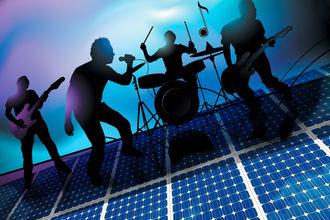Pop music makes solar cells produce more electricity
"We tried our initial tests with various types of music, including pop, rock and classical," says Dunn. Rock and pop were the most effective, perhaps because they have a wider range of frequencies. Using a signal generator to produce precisely measured sounds similar to ambient noise they saw a 50 per cent increase in efficiency, rising from 1.2 per cent without sound to 1.8 per cent with sound (Advanced Materials, DOI: 10.1002/adma.201303304).
The discovery could lead to the development of zinc-oxide solar arrays that can be deployed in noisy public places – next to busy roads, for example. "There are lots of places where this might be useful," says Dunn. "On top of air-conditioning units, on military vehicles or on military personnel where lightweight power sources can be used to supplement heavy power requirements."
"Anything that can improve the conversion efficiency of this type of solar cell is clearly useful," says Paul Weaver at the National Physical Laboratory in Teddington, UK. "It's interesting that exploiting combinations of properties in these complex, multifunctional materials can produce unexpected benefits."
The majority of solar cells on the market won't benefit from the phenomenon, Dunn says. "But it will be possible to design and develop new cells to take advantage of what we've seen."
James Urquhart

